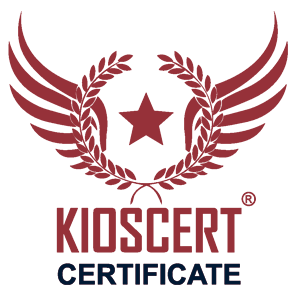
What Are Natural and Organic Cosmetics?
In the cosmetics industry, the terms "natural" and "organic" are gaining increasing importance every day. However, understanding and distinguishing these terms correctly is quite critical. Natural cosmetic products mostly consist of formulas made from plant-based and mineral ingredients, free from synthetic additives. Organic cosmetics, on the other hand, are products that certify a certain proportion of these natural ingredients have been sourced from organic farming. The term organic indicates adherence to certified agricultural practices not only in production but also in raw material procurement.
Although these two concepts may seem similar, there are distinct differences between them. Organic products are audited according to certain international or national organic certification systems; these audits cover not only the ingredients but also production conditions, processing methods, and packaging processes. Natural products may not have such regulation at this level. For example, if 95% of a product’s content is natural, the remaining 5% synthetic perfume may still allow the “natural” label but would disqualify it from being “organic.”
Moving toward natural and organic certification processes in the cosmetics sector offers significant advantages not only for legal compliance but also for consumer trust. Consumers nowadays prefer products they can understand the contents of and that respect nature; this essentially obliges brands to produce according to principles of naturalness and transparency.
Information:
Products labeled “organic” must document their compliance with ecological criteria throughout the entire process from production to packaging.Content Criteria and Certification Differences
The criteria used in the certification of natural and organic cosmetic products examine both the quality and sources of the product content. In natural products, most ingredients must be obtained from nature and minimally processed. These may include cold-pressed oils, essential plant extracts, or natural clays. For organic certification, the majority (usually at least 95%) of these natural ingredients must be obtained through organic farming practices.
Certification bodies analyze not only the content but also all substances used throughout the product. These analyses strictly prohibit the presence of chemicals such as synthetic dyes, parabens, SLS, and PEG. Environmentally harmful production processes are also restricted. Some international certifications (such as COSMOS, ECOCERT, NATRUE) classify products based on different criteria. Some certifications include certain proportions of water content, while others consider only oil and solid matter percentages.
Comparative Certification Features
- COSMOS Organic: At least 95% organic content, mandatory eco-friendly production
- ECOCERT: Minimum 95% natural content, 10% organic content requirement
- NATRUE: Three levels: Natural, Natural and Organic, Organic
Animal-Derived Ingredient Control
Besides being natural and organic, the presence or absence of animal-derived ingredients in cosmetic products is also an important evaluation criterion in the certification process. This control mechanism has become mandatory especially for producers seeking certifications related to ethical preferences such as vegan or cruelty-free. Animal-derived ingredients include components like gelatin, lanolin, collagen, carmine, keratin, beeswax, etc. The use of such ingredients in formulations may be limited or completely prohibited by many natural or organic certification programs.
Detection of these ingredients during certification is conducted not only based on label declarations but also via supply chain data from the producer, raw material analyses, and laboratory tests when necessary. Certification bodies review specification documents and MSDS forms requested from the producer to verify whether all components are sourced from animals. Additionally, how these ingredients are obtained (e.g., whether animals were harmed or if it was sourced naturally) is part of the ethical evaluation.
Note:
A component being natural does not necessarily mean it is not animal-derived. Therefore, producer declarations and analysis reports must be evaluated together.Skin-Friendly Formulation Approval
Natural and organic cosmetic products must be safe and beneficial not only in terms of ingredient sources but also regarding their effects on human health. Skin-friendly formulation approval is a critical phase that verifies the product causes no irritation, allergic reaction, or harmful effect on all users, including sensitive skin types. This approval is performed during certification through scientific methods such as “dermatological testing” or “irritation tests.”
Main criteria for considering a product skin-friendly include hypoallergenic content, pH compatibility (within 5.0–6.5 range), formulas free from irritant substances like perfumes and dyes, and successful results from dermatological tests conducted on sensitive skin. Most of these tests are carried out on volunteer subjects by independent laboratories, and results are submitted as reports to the certification body. Repeatability and scientific validity of these tests are also considered.
Skin-Friendly Formulation Criteria
- Use of hypoallergenic ingredients
- pH level compatible with skin (range 5.0–6.5)
- Formulas free from irritants like perfumes and dyes
- Dermatological test reports from independent labs
Labeling and Logo Rules
One of the most important phases in delivering natural and organic cosmetic products to consumers is the rules for labeling and logo use. Labels not only display product content but also play a critical role in legal compliance, consumer information, and marketing. Improper labeling can mislead consumers about a product’s natural or organic claims and may lead to legal penalties. Therefore, strict regulations exist on which logos, statements, and sizes must appear on certified products’ labels.
Internationally recognized certification programs (such as ECOCERT, COSMOS, NATRUE) typically require details like certificate number, certifier code, and labeling date to appear alongside logos. Also, the proportion of organic ingredients in the product is sometimes numerically indicated in some logos. Claims like “100% natural” or “organic content” are allowed only if backed by certification and verified compliance.
Labeling Implementation Rules
- Certification logo must be clearly visible on the product label
- Misleading or exaggerated claims must be avoided
- Proportional distribution of ingredients should be indicated if necessary
- Certificate number and validity period should be on the label’s back
Warning:
Claims such as "natural" or "plant-based" that may mislead consumers should only appear on labels if supported by certification.KIOSCERT Evaluation System
In the certification process for natural and organic cosmetic products, not only content declarations but also all stages from production facility to supply chain are carefully evaluated. Competent audit organizations like KIOSCERT consider not only product contents but also hygienic conditions of production environments, whether equipment poses chemical residue risks, and staff training levels. During evaluation, production site inspections are conducted, documents regarding ingredient sources are requested, and compliance of production processes with organic/natural standards is analyzed.
Additionally, KIOSCERT’s evaluation system includes sustainability criteria. For example, whether packaging is recyclable, energy-saving measures in production, or environmentally sensitive waste management processes are also checked. In this way, the evaluation system certifies not only the product but also the brand’s environmental responsibility.
